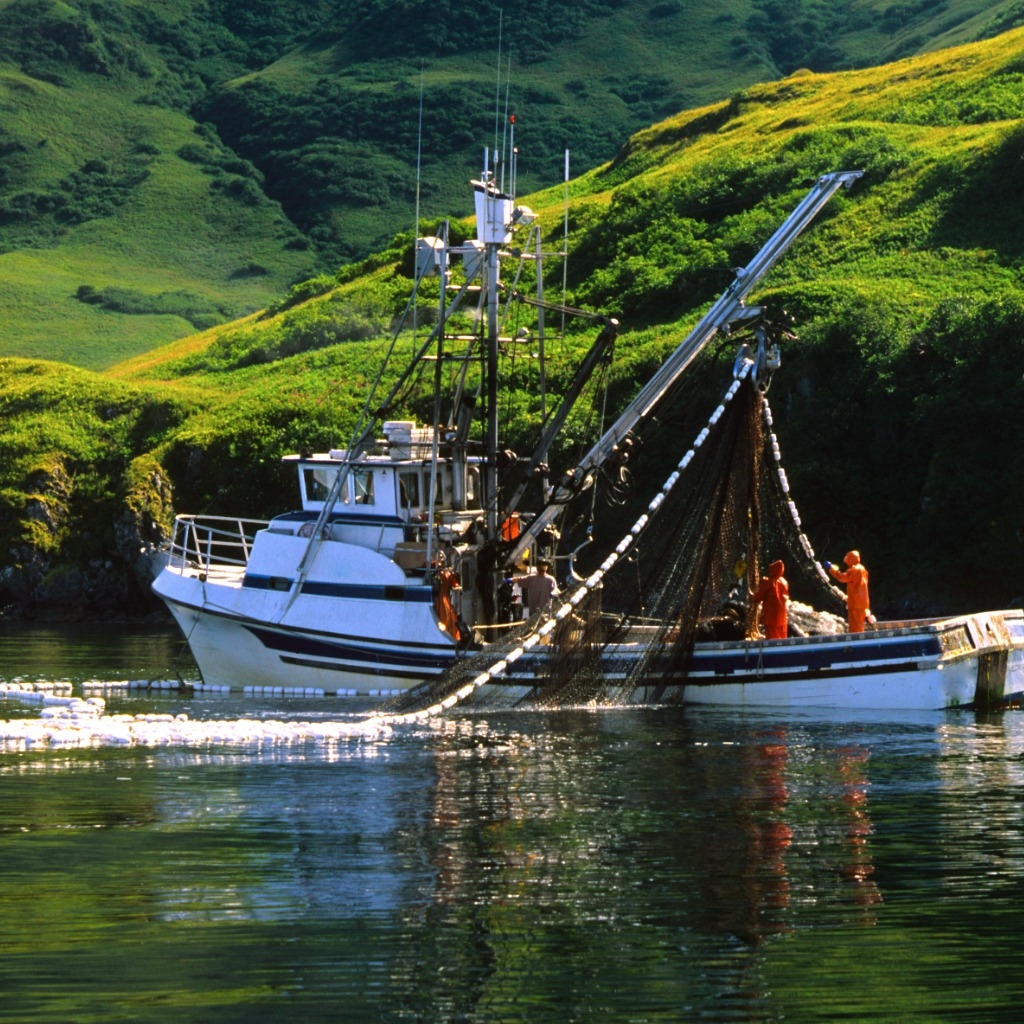The amount of atmospheric carbon that the ocean can sequester varies greatly depending on location, according to 17 scientists who have published an article in the April 27 issue of the journal Science.
This variation affects models of climate change and the carbon cycle.
The size of the variation is three gigatons of carbon per year, according to co-author David A. Siegel, professor of marine science at the University of California, Santa Barbara, and director of UCSB's Institute for Computational Earth System Science.
"This is huge considering the eight gigatons of carbon from fossil fuel we burn each year," said Siegel. "The only reason we discovered this variation is due to the development of new tools that accurately measure the sinking flux of carbon."
Siegel was the physical oceanographer tracking the many instruments deployed during the two experiments.
A press release from Woods Hole Oceanographic Institution, describing the research, follows below:
Ocean's ‘Twilight Zone' Plays Important Role in Climate Change
New study identifies a critical link influencing the ocean's ability
to store carbon dioxide
A major study has shed new light on the dim layer of the ocean called the "twilight zone" -- where mysterious processes affect the ocean's ability to absorb and store carbon dioxide accumulating in our atmosphere.
The results of two international research expeditions to the Pacific Ocean, published April 27 in the journal Science, show that carbon dioxide -- taken up by photosynthesizing marine plants in the sunlit ocean surface layer -- does not necessarily sink to the depths, where it is stored and prevented from re-entering the atmosphere as a greenhouse gas. Instead, carbon transported to the depths on sinking marine particles is often consumed by animals and bacteria and recycled in the twilight zone -- 100 to 1,000 meters below the surface -- and never reaches the deep ocean.
Using new technology, the researchers found that only 20 percent of the total carbon in the ocean surface made it through the twilight zone off Hawaii, while 50 percent did in the northwest Pacific near Japan.
The twilight zone acts as a "gate," allowing more sinking particles through in some regions and fewer in others, complicating scientists' ability to predict the ocean's role in offsetting the impacts of greenhouse gases. It also adds a new wrinkle to proposals to mitigate climate change by fertilizing the oceans with iron -- to promote blooms of photosynthetic marine plants and transfer more carbon dioxide from the air to the deep ocean.
"The twilight zone is a critical link between the surface and the deep ocean," said Ken Buesseler, a biogeochemist at Woods Hole Oceanographic Institution (WHOI) and lead author of the new study in Science, co-authored by 17 other scientists. "We're interested in what happens in the twilight zone, what sinks into it and what actually sinks out of it. Unless the carbon that gets into the ocean goes all the way down into the deep ocean and is stored there, the carbon can still make its way back into the atmosphere. Without long-term carbon storage at depth, the ocean can do little to stem the increase in atmospheric levels of carbon dioxide, a greenhouse gas that impacts the earth's climate."
Buesseler was a leader of the ambitious project, funded primarily by the US National Science Foundation, called VERTIGO (VERtical Transport In the Global Ocean). More than 40 biologists, chemists, physical oceanographers, and engineers from 14 institutions and seven countries participated in the two VERTIGO cruises in 2004 and 2005 to investigate how marine plants die and sink, or are eaten by animals and converted into sinking fecal pellets.
These sinking particles, often called "marine snow," supply food to organisms deeper down, including bacteria that decompose the particles. In the process, carbon is converted back into dissolved organic and inorganic forms that are re-circulated and reused in the twilight zone and that can make their way to the surface and back into the atmosphere.
The sites off Hawaii and Japan were selected because they had been the focus of long-term ocean observations by co-authors David Karl (University of Hawaii) and Makio Honda (Japan Agency for Marine-Earth Science and Technology). Biologists Deborah Steinberg (Virginia Institute of Marine Sciences) and Mary Silver (University of California, Santa Cruz) were needed to identify plankton species and understand differences in the food webs that propel the marine carbon cycle. Thomas Trull (University of Tasmania, Australia), Philip Boyd (University of Otago, New Zealand), and Frank Dehairs (Free University of Brussels, Belgium) all study the Southern Ocean and could provide important perspectives contrasting ocean carbon cycle off Antarctica and in VERTIGO. David Siegel (University of California, Santa Barbara) helped track the ocean currents and pathways of the sinking particles. James Bishop (Lawrence Berkeley National Laboratory and University of California, Berkeley) was funded by the US Department of Energy to deploy new autonomous optical sediment traps designed to follow the hourly changes in sedimentation as well as ship deployed particle sampling systems to quantify the abundance and composition of particles in the twilight zone.
"This combination of expertise could not be found in any single lab or country," Buesseler said. "We were fortunate to attract such a diverse group of talented scientists willing to unravel the secrets of the twilight zone and its role in the global carbon cycle."
While many studies have investigated the surface of the ocean, little research has been conducted on the carbon cycle below. The VERTIGO team examined a variety of processes to open a new window into the difficult-to-explore twilight zone. They successfully used a wide array of new tools, including an experimental device that overcame a longstanding problem of how to collect marine snow falling into the twilight zone.
The problem is that particles sink slowly, perhaps 10 to a few hundred meters per day, but they are swept sideways by ocean currents traveling many thousands of meters per day. To collect sinking particles, scientists use cones or tubes that hang beneath buoys or float up from seafloor. That, Buesseler said, "is like putting out a rain gauge in a hurricane."
Buesseler and WHOI engineer Jim Valdes developed Neutrally Buoyant Sediment Traps (NBST) -- free-floating devices that sink to a programmed depth within the twilight zone and neither sink nor rise. They are swept along with the currents for several days, collecting particles, and then programmed to resurface, transmit their position via satellite, and wait for recovery, more than 10 to 20 miles away from where they were dropped into the ocean.
"It's a bit like finding a needle in a haystack, since they are so small and difficult to spot, especially in rough seas that are common in the open ocean," Valdes said.
On their first scientific mission for VERTIGO in 2004, Buesseler and Valdes could only wait and hope their devices would work. "Seven NBSTs went in the water and all seven came back with their precious cargo -- a first in ocean sciences history," Buesseler said.
Why more carbon reached the depths in the northwest Pacific might be due to many factors. Waters there are full of silica that plankton incorporate to make shells.
Do the silica-laden plankton weigh more and thus sink faster, giving bacteria less time to break them down? Do lower water temperatures in the northwest Pacific slow down the breakdown of organic carbon? Do different populations in the food webs at different sites change how organic matter is broken down and marine snow is produced? Scientists will continue to explore these regional differences in the ability of carbon to reach the deep sea.
In June, Buesseler and colleagues head to Bermuda to examine seasonal changes in the rain of carbon through the twilight zone. They will repeatedly sample at a single site, using a new and improved NBST called the Twilight Zone Explorer.
"Only with continued observations and new techniques can we hope to understand this often overlooked layer in the ocean that is as important to the global carbon cycle as the sunlit surface layer where atmospheric carbon dioxide first enters the ocean," Buesseler said.
For images, contact media@whoi.edu.
Related Links:
A Journey to the Ocean's Twilight Zone – Oceanus Magazine
www.whoi.edu/oceanus/viewArticle.do?id=15328
Swimming in the Rain – Oceanus Magazine
www.whoi.edu/oceanus/viewArticle.do?id=15329
Cafe Thorium
http://cafethorium.whoi.edu/website/about/index.html
VERTIGO - Ocean Particle Fluxes
http://cafethorium.whoi.edu/website/projects/vertigo.html
Sediment Traps - WHOI Ocean Instruments Web site
www.whoi.edu/instruments/viewInstrument.do?id=10286
Twilight Zone EXplorer
http://cafethorium.whoi.edu/website/projects/tzex.html
VERTIGO cruises



